7 Cool Things to See and Do in Bastille, Paris
Bastille is a name tied forever to the French Revolution. The prison that once stood here was torn down in 1789, but the square still carries its memory. Around it you’ll find traces of the past, from the July Column to streets once filled with cabinetmakers.
At the same time, the neighborhood offers quiet gardens, hidden passages, and architecture worth pausing for. The square is only the start. You’ll find food markets, lively bars, hidden streets, and one of the city’s best green walks.
1. Place de la Bastille and the July Column
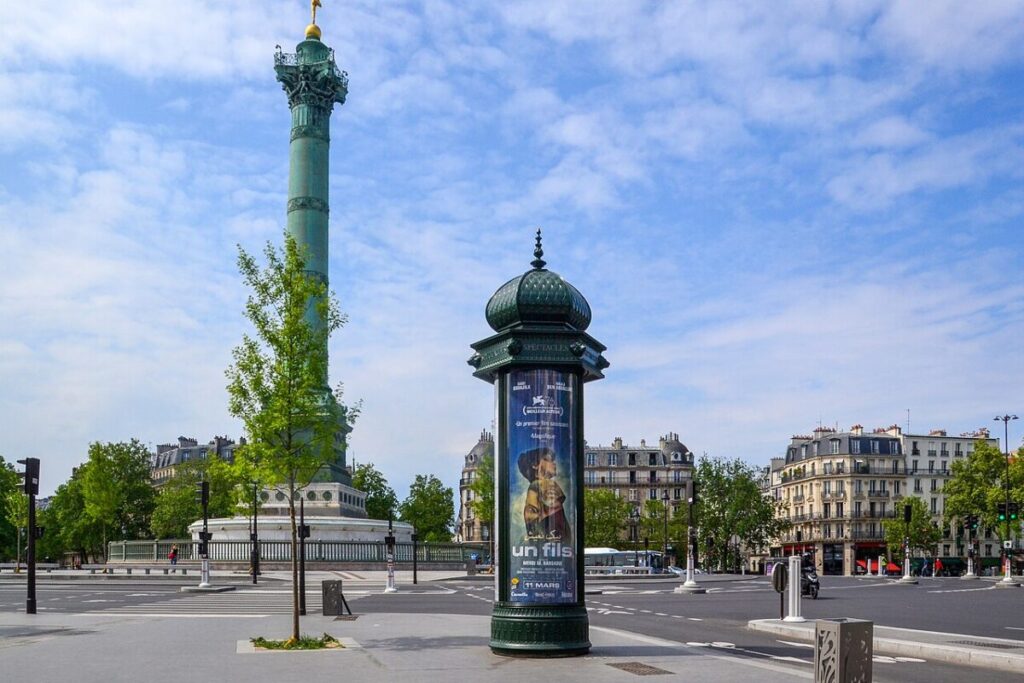
This square was once home to the Bastille prison, stormed on July 14, 1789. The building was demolished within a year, but the event set off the French Revolution.
Today, you can still see the outline of parts of the fortress traced on the pavement. Few visitors notice it unless they’re looking for it.
The July Column rises in the center of the traffic circle. At 47 meters tall, topped with a gilded figure of Liberty, it honors the 1830 revolution that toppled Charles X.
The column also contains a crypt with the remains of those killed in the uprising. Stand close to it and you’ll spot plaques that explain the story. It’s worth taking a slow lap around the square – there’s more to see here than the constant swirl of cars.
2. Opéra Bastille
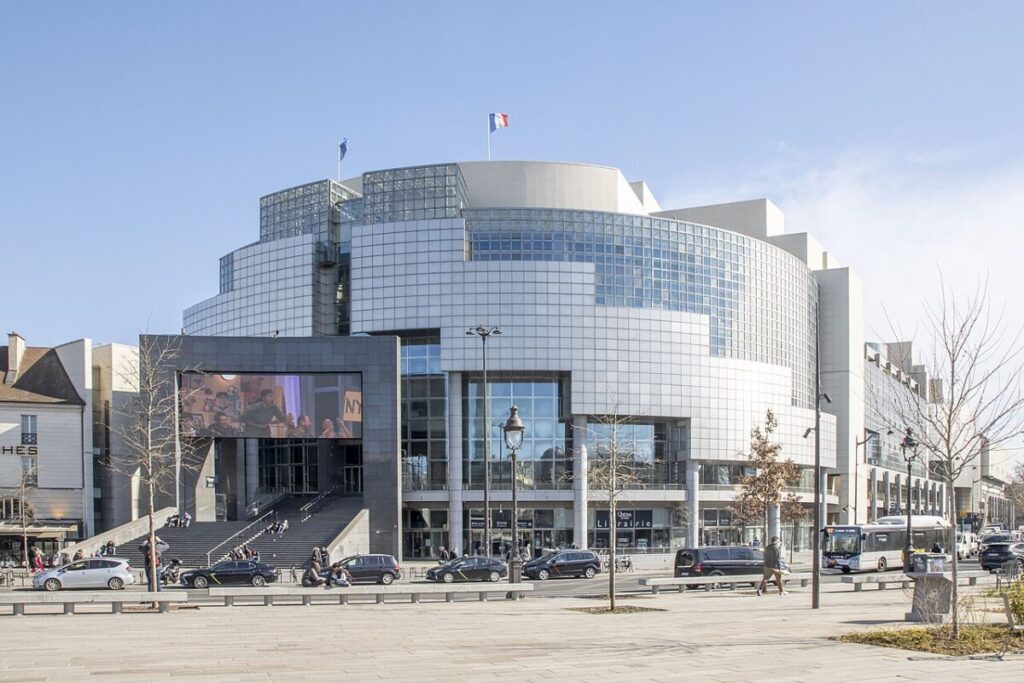
The modern opera house dominates the square. It opened in 1989 on the bicentennial of the French Revolution and was designed to be a people’s opera, bigger and more accessible than Palais Garnier.
Inside, the main hall seats nearly 2,700, with a stage large enough to handle several productions at once. If you’re interested in the arts, check the schedule well ahead as popular operas sell out quickly.
Another way to appreciate bastille is through a guided tours showing the backstage machinery, rehearsal rooms, and how the whole building works.
Even if you’re not an opera fan, it’s hard not to feel something standing in the middle of that huge, purpose-built hall.
3. Marché d’Aligre
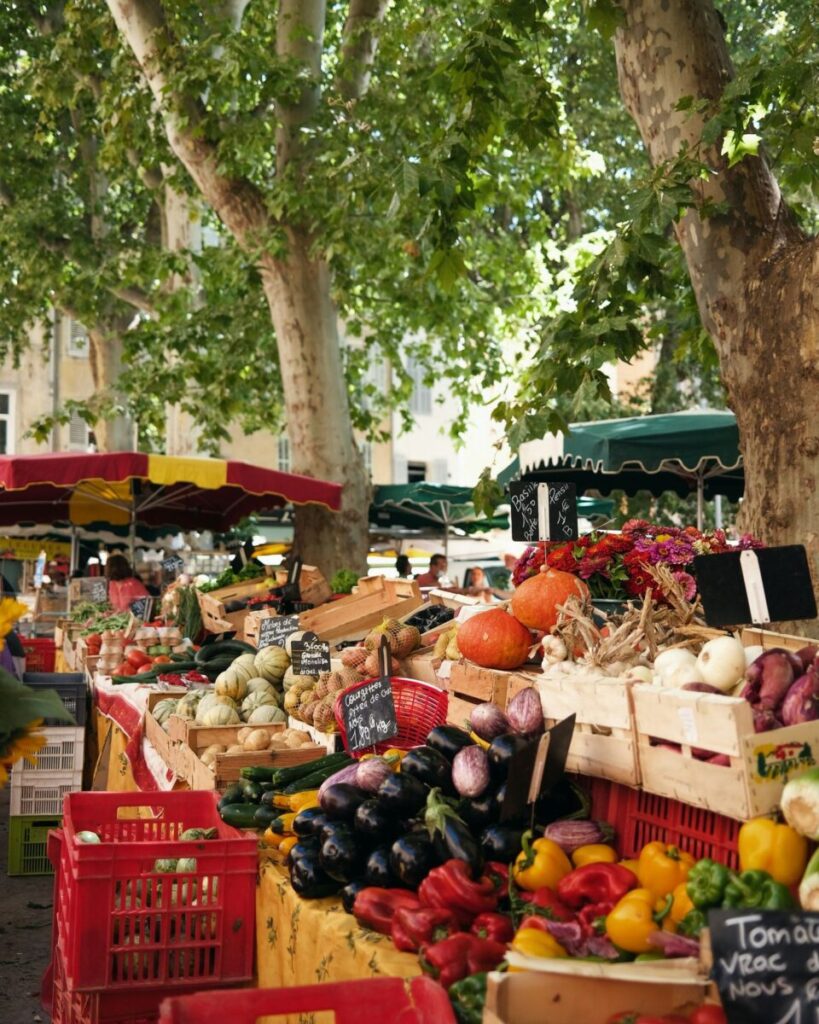
Walk ten minutes south and you reach one of Paris’s busiest markets. Marché d’Aligre is open every day except Monday, and it packs a lot into a small space. The open-air part is full of fruit, vegetables, flowers, and secondhand goods.
The covered Marché Beauvau has butchers, fishmongers, and cheese stalls.
It’s noisy, colorful, and often cheaper than the markets closer to the center. People come here to do their daily shopping, so you feel like you’re stepping straight into local life.
Saturday and Sunday mornings are the best time to visit, when every stall is full and cafés nearby are overflowing with people taking a break.
4. Coulée Verte René-Dumont

Behind the opera begins a different side of Bastille. The Coulée Verte is an elevated park built on an old railway line, running nearly five kilometers toward the Bois de Vincennes.
It’s the older cousin of New York’s High Line, and locals use it to escape traffic for a quiet walk.
Trees and flowers line the path, benches give you places to stop, and at times the walkway lifts you high above the street with unusual views of rooftops and courtyards.
There are multiple entry points, so you can use it for a short stroll or follow it the whole way east.
5. Viaduc des Arts
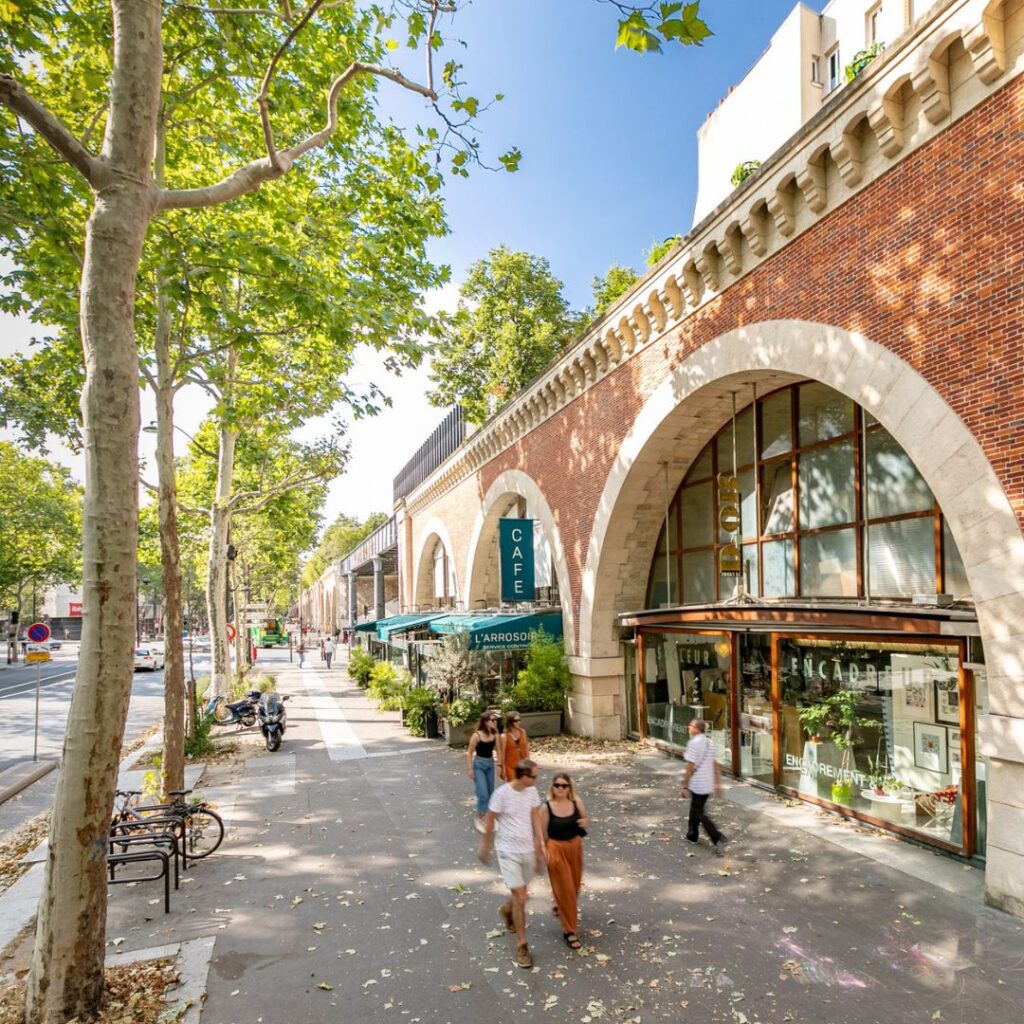
Under the arches of the same old railway runs the Viaduc des Arts. Craftsmen and designers turned the brick spaces into workshops. As you walk along Avenue Daumesnil you pass glassblowers, instrument makers, textile studios, and small galleries.
Some open their doors to visitors, and even if you don’t go inside, it’s a stretch that feels different from most Paris shopping streets.
On top of the viaduct runs the first part of the Coulée Verte, so you can combine the two: art and design at street level, greenery above.
6. Rue de Lappe & Rue de la Roquette
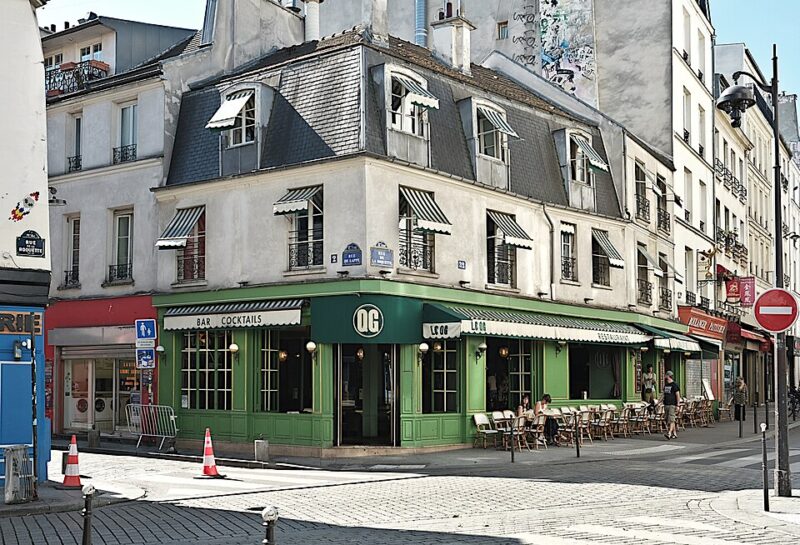
Bastille is famous for its nightlife, and these two streets carry most of it. Rue de Lappe is narrow, packed with bars, some of which have been around for decades. Music pours out, people spill onto the sidewalks, late into the night.
Rue de la Roquette is broader, with restaurants and larger venues. It’s lively but slightly less cramped, and you’ll find more food options here if you want to start with dinner before drinks.
If you stay in the area overnight, check reviews carefully as some hotels get a lot of noise from these streets. But for an evening out, this is one of the most concentrated nightlife spots in Paris.
7. Bassin de l’Arsenal
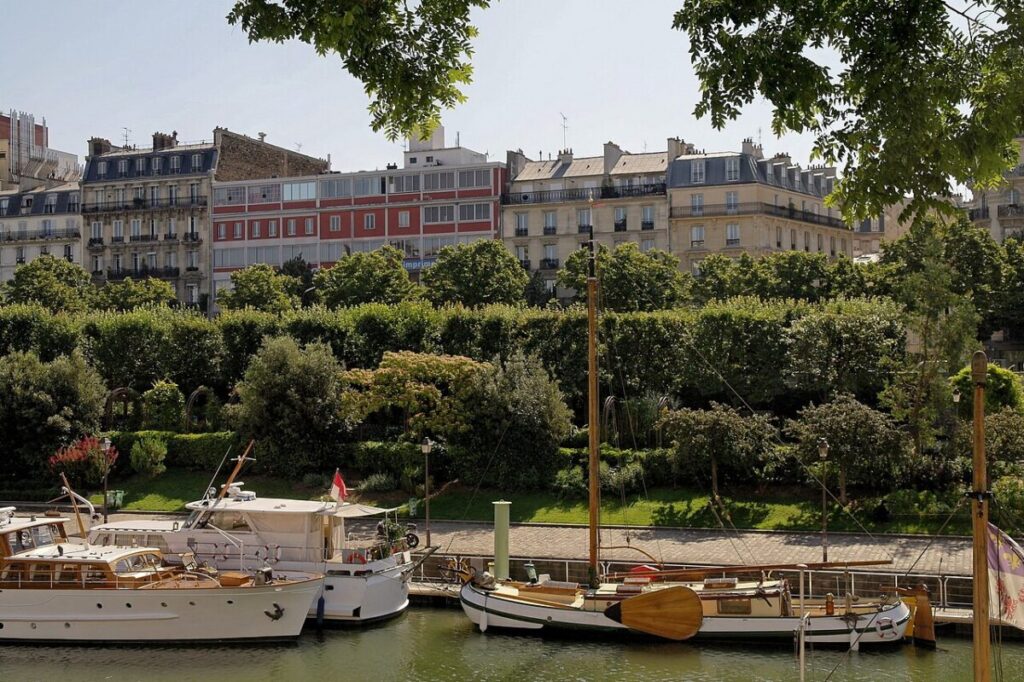
Just below Place de la Bastille lies the Port de l’Arsenal, a small marina connecting the Seine to Canal Saint-Martin.
Walking along the quays, you see pleasure boats, some lived in year-round, tied up under the trees. The paths are landscaped with gardens and benches making it a calm retreat compared to the traffic up top.
In the summer, families picnic here, and small cafés open terraces close to the water. A nice way to reset between the noise of the square and the busier streets beyond.
8. Rue Crémieux
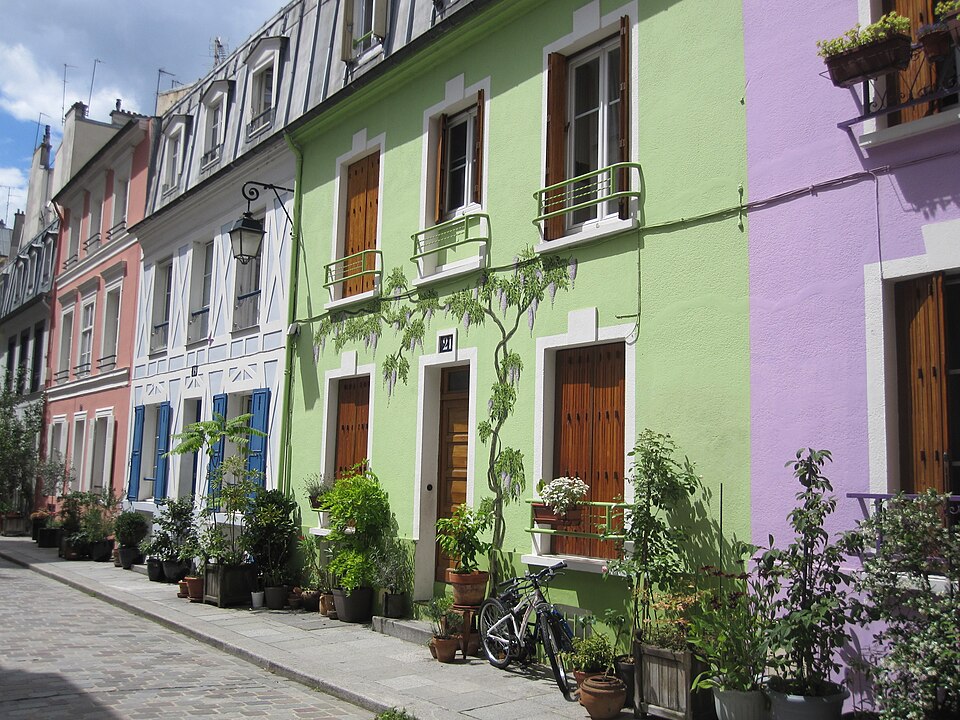
Ten minutes from the square, Rue Crémieux is one of Paris’s most photographed streets. Each townhouse is painted a different color – pale blue, pink, yellow – with shutters and flower boxes adding to the look.
It’s a residential street, so it’s important to keep visits quick and respectful. Locals sometimes complain about the attention, but if you pass through quietly, it’s worth seeing how different it feels from the rest of the neighborhood.
The street runs between Rue de Lyon and Rue de Bercy, so it’s easy to include if you’re heading toward Gare de Lyon.
9. Passage du Chantier
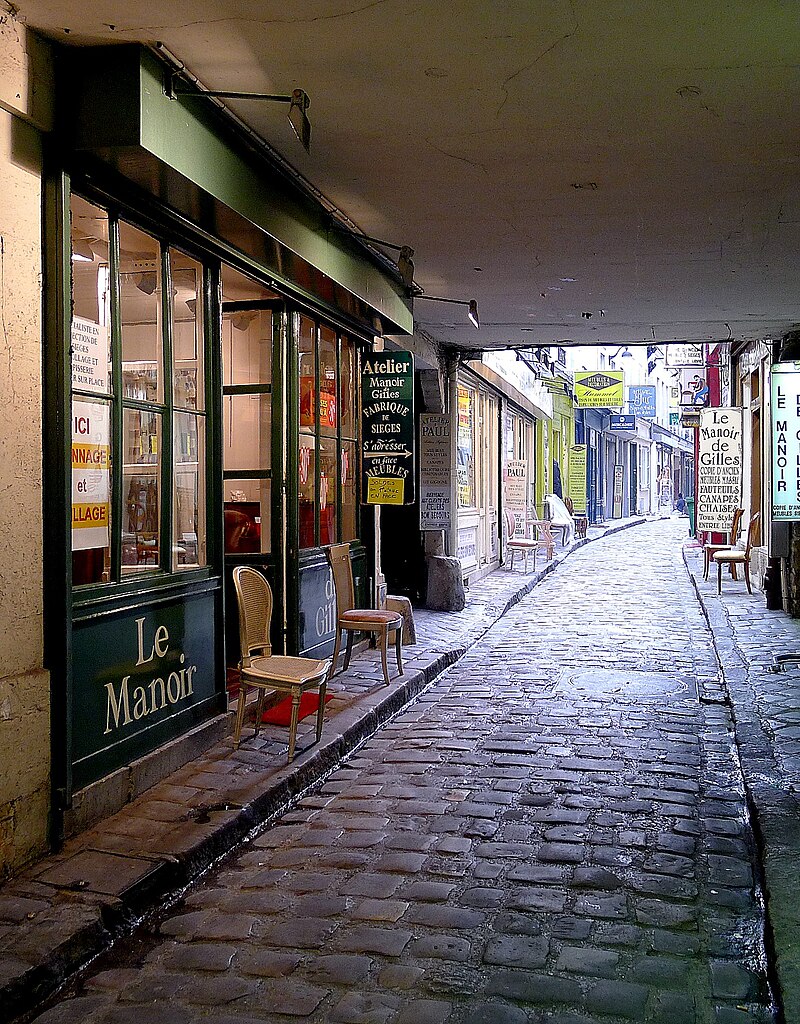
Hidden off Rue du Faubourg Saint-Antoine, this passage is a reminder of Bastille’s old cabinet-making and furniture trades. Workshops and showrooms still line the cobbled lane, some specializing in restoration, others in design pieces.
It’s not polished like the covered passages near the Grands Boulevards, you feel the working atmosphere here. For travelers, it’s a quick step into a part of Paris that built the city’s reputation for craftsmanship.
The passage is open to walk through during the day, and you’ll often see artisans at work.
Getting There
Bastille is served by metro lines 1, 5, and 8 – only a few stops from the Louvre or the Marais. It’s an area that works well for a half-day: a morning at the markets, a walk along the Coulée Verte, and an evening out.
For many travelers, Bastille is one of the liveliest corners of Paris with great history, food, green space, and nightlife.
